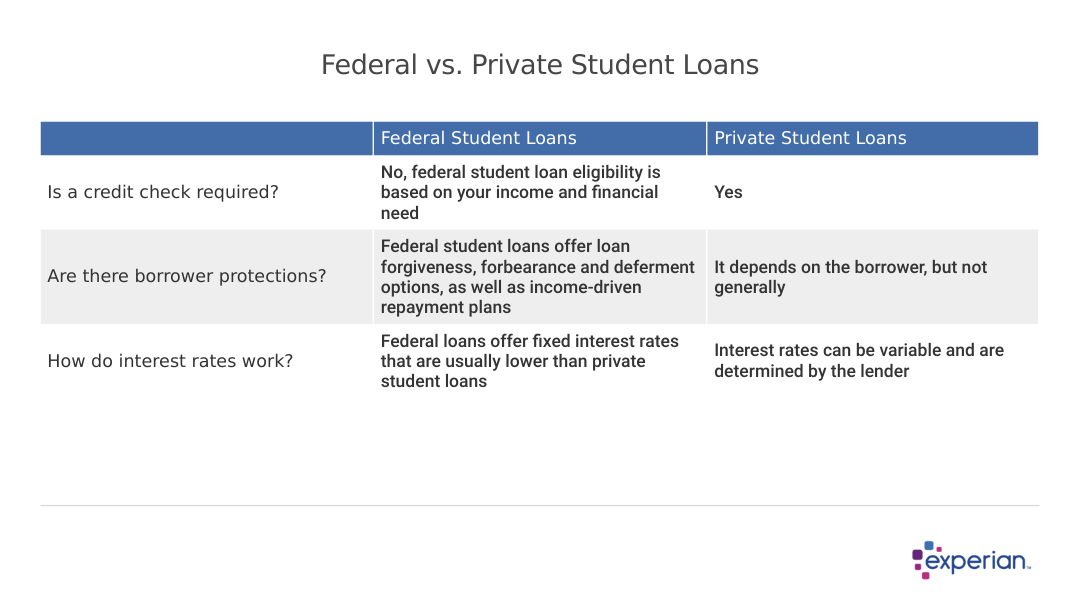Financial aid falling short? Here's 6 ways to close your college funding gap

NDAB Creativity // Shutterstock
Financial aid falling short? Here’s 6 ways to close your college funding gap
Young adult working on laptop with books on bookshelf in background.
College can be a huge financial investment. For the 2023-24 academic year, the average cost of tuition and fees for a full-time student attending a public four-year in-state college is $11,260, according to the College Board. That doesn’t include books, supplies and living expenses.
Financial aid can be a tremendous resource, but you might still have a funding gap to cover. Experian compiled six ways to help pay for college if financial aid isn’t enough.
1. Appeal Your Award Letter
If your family’s financial situation has changed, writing an appeal letter could help you get more financial aid. After completing the Free Application for Federal Student Aid (FAFSA), each school you’ve been accepted to should send you a letter explaining your award package. Your expected family contribution (EFC) determines your eligibility for certain types of federal aid. (Starting in the 2024-2025 academic year, this will be replaced with something called the Student Aid Index—SAI—which will serve the same function.)
Financial aid award letters typically include:
- Your estimated cost of attendance
- Your EFC (or SAI beginning in the 2024-25 academic year)
- Your financial need
- Scholarships and grants
- Work-study eligibility
- Federal student loans
You can also appeal your award letter if you made an error on your FAFSA or have received a better offer from another school and want to see if the college will match it. Either way, it involves writing a personalized letter to the college that explains your situation. Providing documentation can strengthen your case.
2. Apply for Scholarships
Unlike student loans, scholarships do not need to be repaid. This type of free money can go a long way when financial aid isn’t enough—and there seems to be plenty of money to go around. According to the National Scholarship Providers Association, roughly $100 million in scholarships goes unclaimed every year.
Databases like Scholarships.com and Fastweb can be a great jumping-off point. You can also research state and local organizations, as well as groups that award scholarships based on specific:
- Hobbies and interests
- Majors
- Ethnicity
- Extracurricular activities
- Religion
Stay on the lookout and continue applying for scholarships throughout your college career—not just as an incoming freshman.
3. Look Into Grants
Like scholarships, grants are considered free-and-clear gift aid. If you have financial need, you may be eligible for federal grants. The information on your FAFSA will determine your eligibility. This type of free money can also be available through states, private organizations and colleges.
Start by completing the CSS profile, which is an online application that many colleges and scholarship providers use to award non-federal financial aid. It’s operated through the College Board—and fee waivers are available to qualifying students. You can also check with your state to see if any grants are up for grabs.
4. Consider Part-Time Jobs
Picking up a part-time job could be a great way to drum up extra cash if your financial aid isn’t enough. In 2022, about 42% of full-time college students worked, according to the U.S. Bureau of Labor Statistics. Some potential money-making gigs may include:
- Working on campus
- Exploring off-campus jobs at restaurants, retail stores and offices
- Tutoring
- Driving for rideshare apps
- Freelancing (writing, editing, graphic design or social media management, for example)
- Babysitting or pet sitting
![]()

Experian
5. Think About Private Student Loans
Table showing differences between Fed vs Private Student Loans.
Your eligibility for federal student loans should be outlined in your financial aid award letters. If there’s still a funding gap, private student loans could help you cover the difference. These are available through financial institutions—not the federal government.
Despite some drawbacks, the right private student loan could help you cover your college costs if there’s a shortfall of federal aid. Just be sure to think about how student loans will affect your finances going forward. As of 2023, the average U.S. consumer had $38,787 in student loan debt, according to Experian data.
6. Modify Your College Plans
If your funding gap feels insurmountable, you could think about modifying your college plans. That may mean choosing a different school or starting at a community college before transferring to a university. Either option could greatly reduce your out-of-pocket costs, especially if you’re able to live at home. According to the Education Data Initiative, the average local community college student pays roughly $141 per credit hour—compared with $390 per course at an in-state four-year public college (not including room, board and other fees).
The Bottom Line
There may still be ways to pay for college if financial aid isn’t enough. Scholarships, grants, part-time jobs and private student loans can all help cover the gap—or you might choose to attend a more affordable college. The right path for you will depend on your college goals and financial situation.
No matter where you go to college, building a strong credit score is a key part of long-term financial wellness.
This story was produced by Experian and reviewed and distributed by Stacker Media.
